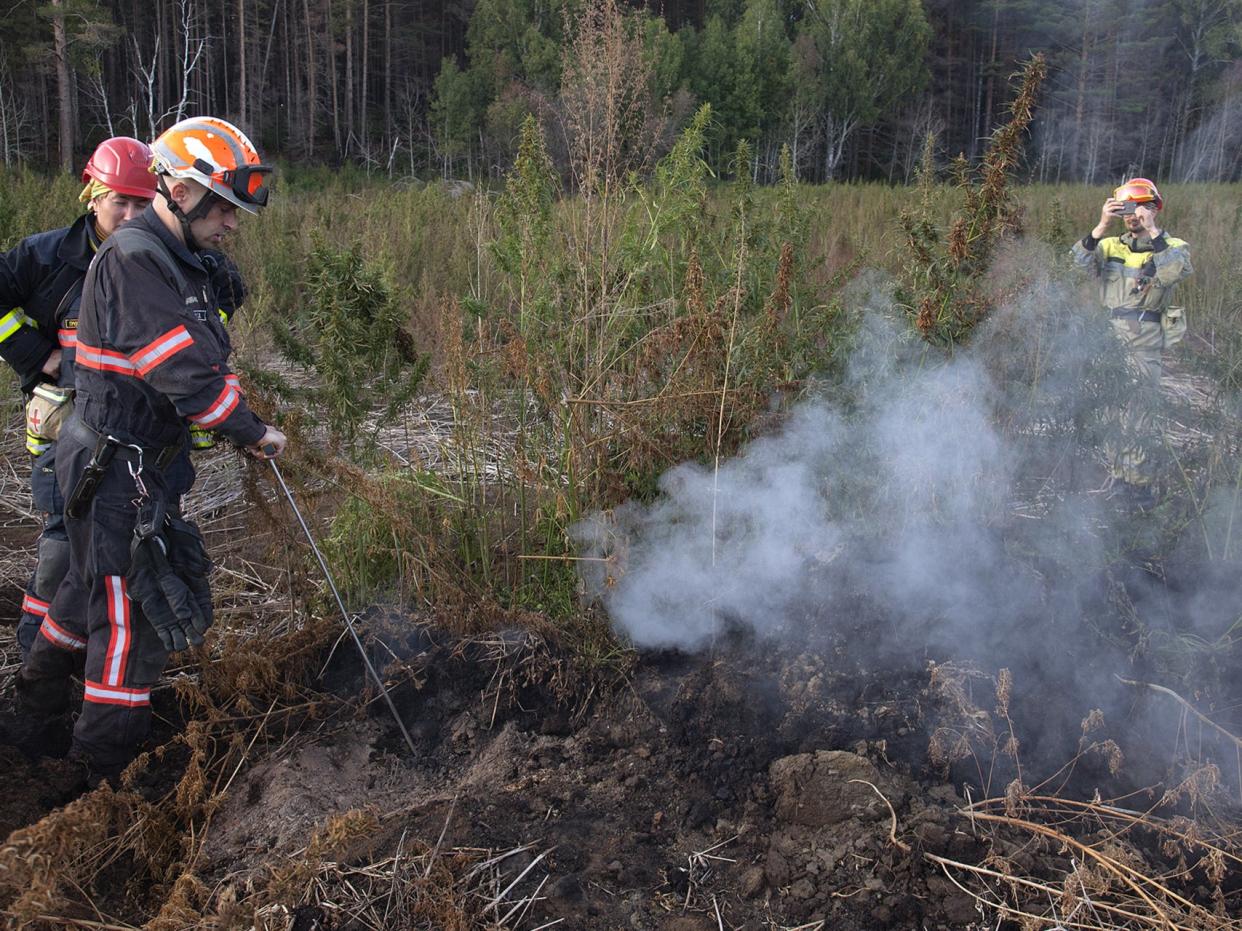‘It’s a climate bomb’: The ‘zombie’ fires driving a vicious circle of global heating

Volunteer fire fighters are battling so-called “zombie fires” in Siberia, a phenomenon which one environmentalist described as a “climate bomb”.
A large peat fire in the Suzunsky pine forest, part of a wildlife reserve in the Novosibirsk region of Siberia, has been burning for months, Greenpeace told The Independent, and perhaps since last year.
They are dubbed “zombie fires” because of being incredibly difficult to extinguish, even in the harsh conditions of Siberia.
The peat smolders at least four inches (10cm) underground, meaning that fires have the ability to survive autumn rains and freezing winters.
Adding to the problem is that the peat bog is surrounded by hundreds of thousands of hectares of pine forests where conditions are now drier due to more frequent droughts.
Therefore if the “zombie fires” are not extinguished, it can spark major grass fires in the spring and forest fires in summer.
Grigory Kuksin, head of Greenpeace's wildfire unit in Russia, who has been fighting the zombie fires, described them as a “climate bomb” to AFP.
Boreal forest, which wraps around high-latitude regions, peat bogs and tundra all have higher concentrations of carbon which spew vast amounts of carbon dioxide (CO2) into the atmosphere when burned. CO2 emissions drive the heating of the planet, which in turn makes the impacts of the climate crisis more frequent and severe, including droughts.
Peatlands in the northern hemisphere store more carbon than all the world’s rainforests combined. If they were to burn, the massive amounts of CO2 released into the atmosphere would immediately render all efforts to control emissions futile.
"We are fighting both against the result of climate change and the very thing that causes it," Mr Kuskin said.
Tackling the fires is filthy work, the volunteers told the news agency, and more complex that fighting conventional forest fires. To extinguish a bog, it has to be flooded with water, and the soil mixed until it forms a liquid paste, Greenpeace coordinator Ekaterina Grudinina said.
Then the temperature is taken from the layer of peat underground. If the temperature remains too high, the volunteers begin the exhausting process again.
This summer, wildfires in the Arctic Circle broke last year’s carbon emissions record, according to the European Union’s earth observation programme, as the region continues to deteriorate at a faster pace than the rest of the world.
In June, Verkhoyansk, a city inside the Arctic Circle, hit 100F (38C), an unprecedented high. Some 19 million hectares, an area larger than Greece, have burned in Russia since the beginning of the year.
Read more
Warming shrinks Arctic Ocean ice to 2nd lowest on record


